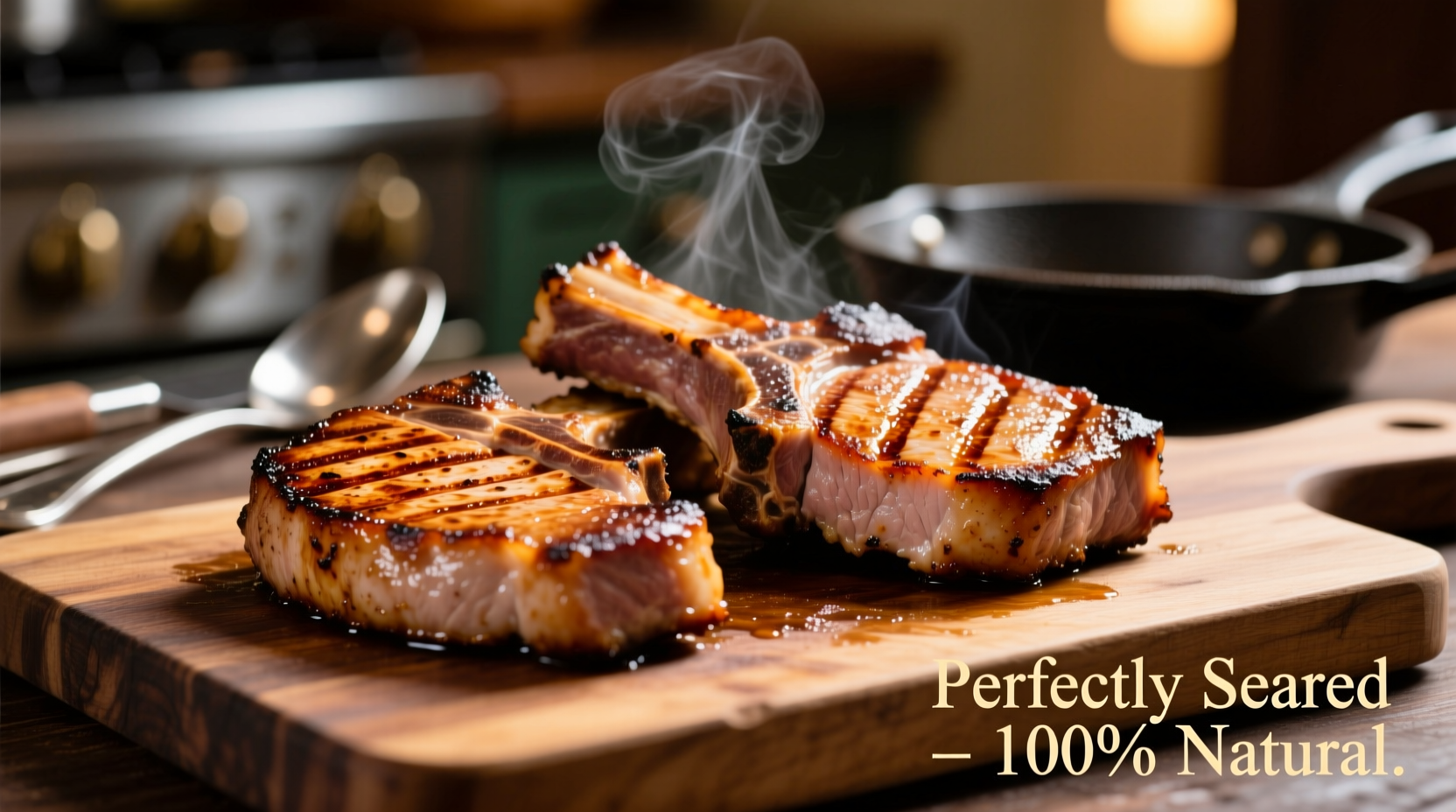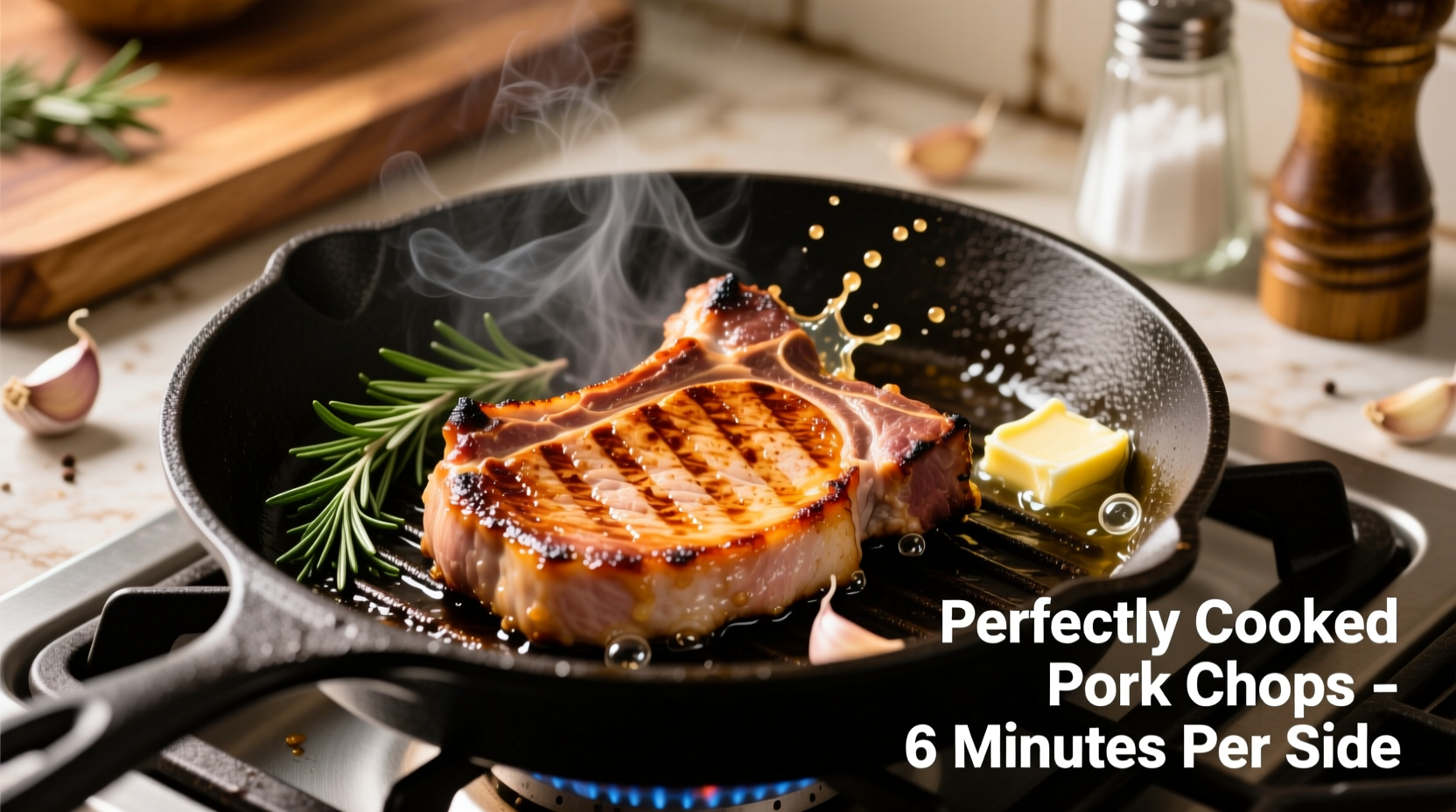The perfect pork chop requires proper selection, seasoning, temperature control, and resting. Cook 1-inch thick chops to 145°F internal temperature (USDA standard) using high-heat searing followed by oven finishing or precise pan monitoring. Rest for 5 minutes before serving for maximum juiciness.
Ever cut into a pork chop only to find it dry, tough, or undercooked? You're not alone. Millions of home cooks struggle with this seemingly simple task. But achieving restaurant-quality pork chops at home is completely within your reach when you understand the science behind the sizzle. This guide reveals the exact techniques professional chefs use to create perfectly cooked pork chops every single time.
Selecting Your Foundation: Choosing the Right Pork Chop
The journey to perfect pork chops begins long before they hit your pan. Not all pork chops are created equal, and your selection dramatically impacts the final result. Bone-in chops typically offer more flavor and retain moisture better than boneless varieties due to the bone's insulating properties. The USDA reports that pork loin chops (also called center-cut chops) and rib chops deliver the most consistent results for home cooking.
Look for chops with even marbling throughout the meat - this intramuscular fat melts during cooking, basting the meat from within. Avoid pale, watery-looking meat, which indicates poor quality or improper handling. The National Pork Board recommends choosing chops at least 1 inch thick for optimal cooking control. Thinner cuts easily overcook before developing that desirable crust.
| Pork Chop Type | Best Cooking Method | Thickness Recommendation | Flavor Profile |
|---|---|---|---|
| Rib Chop | Pan-sear + oven finish | 1-1.5 inches | Richest, most marbled |
| Loin Chop | Pan-sear only | 1 inch | Balanced lean-to-fat ratio |
| Sirloin Chop | Grill or broil | 1.5 inches | Bold, slightly gamey |
| Tenderloin Chop | Quick pan-sear | 0.75 inches | Mildest, leanest option |
Preparation Secrets Professional Chefs Swear By
Proper preparation separates good pork chops from extraordinary ones. Start by bringing chops to room temperature for 30-45 minutes before cooking - this ensures even cooking throughout. Pat them completely dry with paper towels; moisture is the enemy of proper searing.
Seasoning strategy matters more than you might think. While salt and pepper work beautifully, consider adding depth with complementary spices. According to culinary research from the American Institute of Culinary Education, pork responds exceptionally well to warm spices like smoked paprika, garlic powder, and a touch of brown sugar for caramelization. Apply salt at least 40 minutes before cooking to allow proper penetration, or immediately before if time is limited.

The Cooking Process: Three Foolproof Methods
Pan-Searing with Oven Finish (Best for Thick Chops)
This restaurant technique delivers perfect results for chops thicker than 1 inch:
- Preheat oven to 400°F
- Heat 1-2 tablespoons of high-smoke point oil (avocado or canola) in oven-safe skillet until shimmering
- Sear chops 2-3 minutes per side until golden brown crust forms
- Transfer skillet to oven and cook until internal temperature reaches 140°F
- Remove and let rest - temperature will rise to safe 145°F
Stovetop-Only Method (Ideal for Standard Thickness)
For 1-inch thick chops, this straightforward approach works beautifully:
- Use medium-high heat with oil that has high smoke point
- Cook 4-5 minutes per side, monitoring temperature closely
- Reduce heat if exterior browns too quickly before interior cooks
- Add butter, garlic, and herbs during last 2 minutes for flavor infusion
Grilling Technique (Summer Favorite)
For those warm evenings when you want that distinctive grilled flavor:
- Create two-zone fire (hot side for searing, cooler side for finishing)
- Sear 2-3 minutes per side over direct heat
- Move to indirect heat and cover grill until reaching 140°F internally
- Rotate chops 90 degrees halfway through for attractive grill marks
Temperature Control: The Critical Success Factor
Nothing ruins a good pork chop faster than improper temperature. The USDA updated its guidelines in 2011, lowering the recommended safe internal temperature from 160°F to 145°F with a 3-minute rest time. This seemingly small change revolutionized pork cooking, allowing for juicy, pink-centered results while maintaining safety.
Invest in an instant-read thermometer - it's the single most valuable tool for perfect pork chops. Insert it horizontally into the thickest part of the chop, avoiding the bone. Remember that carryover cooking will raise the temperature 5-10 degrees during resting. Pull chops at 140°F for 145°F final temperature.
Avoiding Common Pitfalls: What Most Home Cooks Get Wrong
Based on analysis of cooking forum discussions and culinary school feedback, these represent the most frequent pork chop mistakes:
- Moving too soon: Resist flipping or moving chops until they release naturally from the pan
- Crowding the pan: Cook in batches if necessary to maintain proper searing temperature
- Skipping the rest: Cutting too soon releases precious juices onto the cutting board
- Overcomplicating: Sometimes simple salt, pepper, and proper technique outperforms complex marinades
Culinary professionals emphasize that patience separates successful pork chop preparation from disappointment. The sizzle may tempt you to peek or flip early, but proper crust development requires uninterrupted contact with the cooking surface.
Serving and Pairing Suggestions
After proper resting, serve your pork chops with complementary sides that enhance rather than compete with their flavor. Classic pairings include:
- Apple-based sauces or chutneys (traditional pairing that cuts through richness)
- Roasted root vegetables (carrots, parsnips, or sweet potatoes)
- Creamy polenta or mashed potatoes
- Simple green salad with vinaigrette
For wine pairings, medium-bodied reds like Pinot Noir or fruit-forward whites like Riesling work beautifully with properly cooked pork chops.
Storage and Reheating Tips
If you have leftovers (which is rare with perfectly cooked chops!), store them in an airtight container in the refrigerator for up to 3-4 days. To reheat without drying out:
- Wrap in foil with a splash of broth or water
- Warm slowly in 275°F oven until internal temperature reaches 130°F
- Avoid microwave reheating which typically creates rubbery texture
Frequently Asked Questions
How long should I cook 1-inch thick pork chops?
For 1-inch thick pork chops, cook 4-5 minutes per side in a preheated skillet over medium-high heat. Use a thermometer to verify they reach 140°F internally before resting. Thicker chops may require finishing in a 400°F oven after initial searing.
Why are my pork chops always dry?
Dry pork chops usually result from overcooking or skipping the resting period. Cook to 140°F (not higher) and allow 5 minutes of resting time before cutting. Also, choose chops with visible marbling and avoid excessively thin cuts which cook too quickly.
Should I marinate pork chops before cooking?
Marinating isn't necessary for quality pork chops, especially if they have good marbling. Simple seasoning with salt, pepper, and complementary spices 30-45 minutes before cooking yields excellent results. If using acidic marinades, limit time to 2 hours maximum to avoid texture changes.
What's the best oil for searing pork chops?
Use oils with high smoke points like avocado oil (smoke point 520°F), canola oil (400°F), or refined olive oil (465°F). Avoid extra virgin olive oil which smokes at lower temperatures and can create bitter flavors during high-heat searing.
How do I know when pork chops are done without a thermometer?
While a thermometer is strongly recommended, you can use the touch test: properly cooked pork should feel firm but still slightly yielding, similar to the fleshy part of your palm below the thumb when your hand is relaxed. However, this method is less reliable than using a thermometer for food safety.











 浙公网安备
33010002000092号
浙公网安备
33010002000092号 浙B2-20120091-4
浙B2-20120091-4